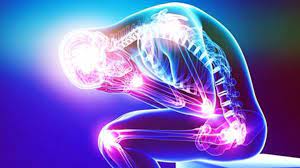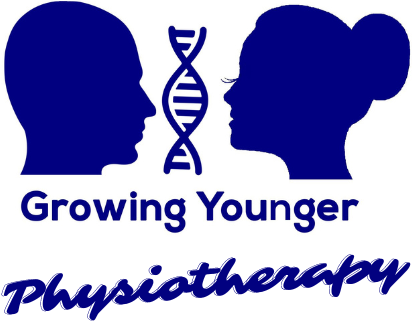The word ’fibromyalgia’ comes from the Latin term for fibrous tissue (fibro), and the Greek for muscle (myo) and pain (algia). It is called a ‘syndrome’ because it is a collection of symptoms such as muscular pain, stiffness, fatigue, rather than a disease. In this article we will look into common symptoms, what causes fibromyalgia and physiotherapy management. However, first of all we will discuss who is more likely to get it?
Around 1 in 50 people will develop fibromyalgia at some time in their life. This condition mostly affects women between the ages of 25 –55. People with a family history of fibromyalgia or rheumatoid arthritis, lupus or ankylosing spondylitis are also more likely to end up with fibromyalgia. You are likely to experience broad symptoms like widespread pain, fatigue, sleep problems, cognitive and mood disturbances.
The latest research reveals that fibromyalgia involves changes in the substances that allow nerve cells to communicate with one another (neurotransmitters). When the production of specific neurotransmitters is disturbed, the nervous system short-circuits.
With a malfunctioning nervous system, the body perceives some sensations stronger than usual. This can have a snowball effect on sleep, fatigue, changes in digestion and cognition.

Many possible causes have been studied. They include viral infections, hormonal disorders, muscle conditions and exposure to toxic substances in the environment. However, there is no definitive answer to what causes fibromyalgia.
It should be noted that there is no cure for fibromyalgia; however, there are many ways to manage it and relieve symptoms. The arthritis foundation recommends that a person who suffers from this condition can manage it with…
• Information and education
• Regular exercise
• Psychotherapy
• Medication
Physiotherapists have many different options to help with the symptoms. These may include:
- massage,
- heat therapy,
- TENS (electrical nerve stimulation),
- joint mobilisation,
- specific stretching exercises
All these techniques are designed to improve circulation, relax muscles, prevent spasms, increase muscle function and joint mobility, alleviate tender points and above all provide pain relief.
Physiotherapy can also prescribe customised exercises for the fibromyalgia sufferer. Aerobic physical exercise produces improvements in many symptoms. These include pain, anxiety levels, mental health in general and the overall impact of fibromyalgia on patients’ lives.
In summary, fibromyalgia is a condition that mostly affects women between the ages of 25-55 and is closely linked with other chronic conditions. The actual cause of the condition is unknown.
Research shows that when the body doesn’t make enough of certain neurotransmitters this can have a chain reaction effect on the rest of the body.
This condition can be managed with aerobic, strength and stretching exercises as prescribed by a physiotherapist.
If you’d like to talk to one of our physiotherapists about how we can help you manage this condition call us at our Howick office on 09-5328942.
- Written by Shawn Lawyer, Physiotherapist
